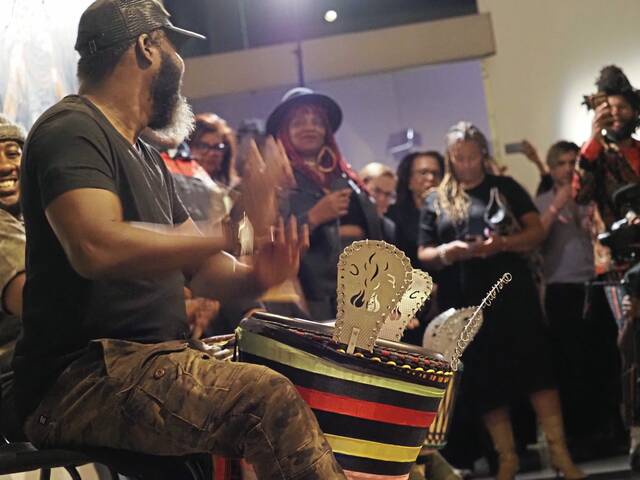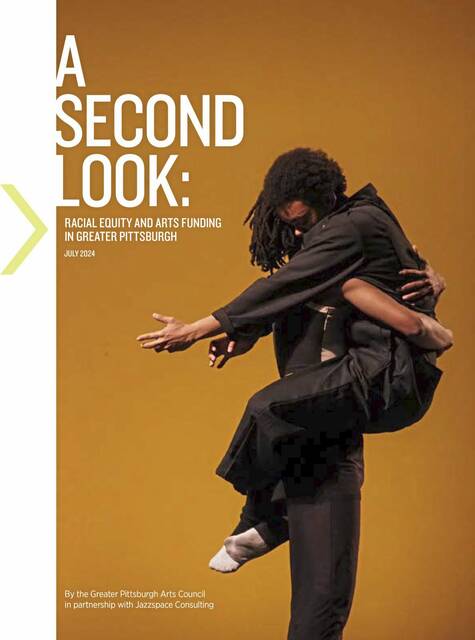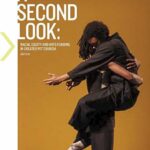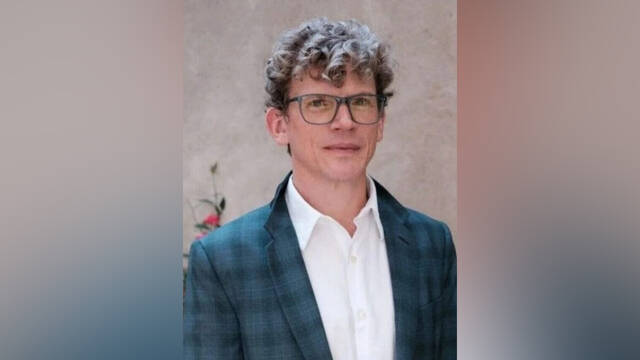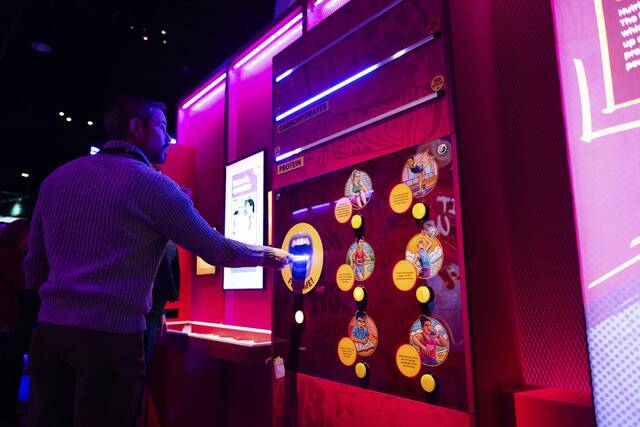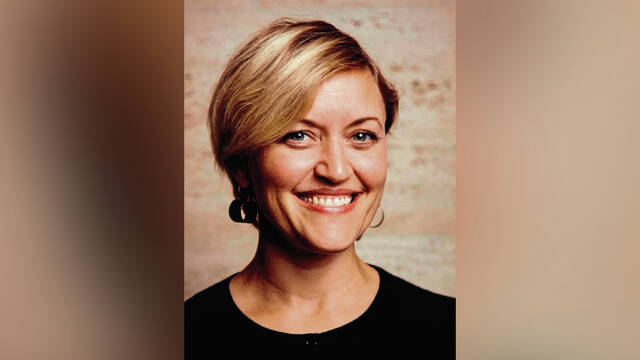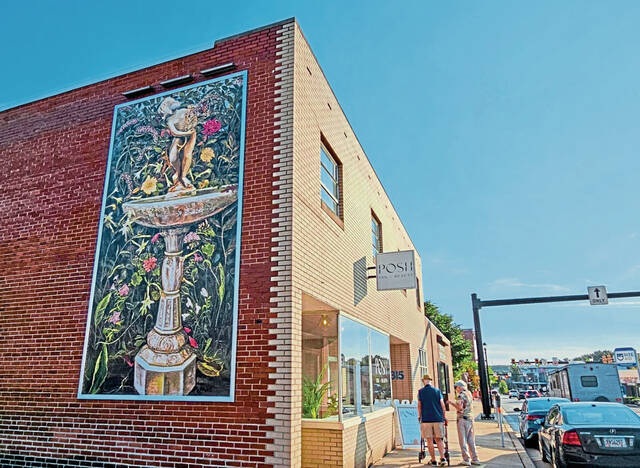Arts and culture funding in Pittsburgh is inequitable, according to a new report released by the Greater Pittsburgh Arts Council.
A Second Look: Racial Equity and Arts Funding in Greater Pittsburgh is supported in part by a National Endowment for the Arts research grant, a follow-up to the Greater Pittsburgh Arts Council’s 2018 report exploring arts grantmaking.
GPAC Director of Research and Cultural Policy Morgan Kasprowicz led the charge for the report. Kasprowicz, who joined GPAC in 2021, said the catalyst for the follow-up to the 2018 report, which looked at funding from 2003 to 2016, came after arts leaders of color did not feel an increase in funding.
The report shows various charts and figures that illustrate racial inequity from 2018 to 2023. One chart shows that in 2023, 82% of total grant dollars went to white organizations while only 18% went to global majority organizations, which includes Black, African, brown, Asian, dual heritage and Indigenous people.
Organizations that continued to fund above the benchmark of 23% or higher, had measures in place, such as racial equity training for all staff and global majority representation in leadership and staff, according to the report.
The report uses the term “global majority” to reflect people of color being the majority in the country and to move away from the construct of race to embrace the multitude of ethnicities, said Kilolo Luckett, executive director and chief curator of ALMA | LEWIS, a contemporary art platform dedicated to Black culture. She also served on the report’s learning and leadership committee.
Though there have been major improvements since the first study, funding to the global majority was shown to only increase 2 percentage points, from 14% to 16%, since the 2018 report.
The Greater Pittsburgh Arts Council research team analyzed more than 11,000 grants across nearly 500 local organizations by about 200 local and national funding organizations between the fiscal years 2018 and 2023.
Since the racial reckoning of 2020 after the murder of George Floyd, the report notes, in 2021 funding to global majority organizations increased to 26.2%, but it has significantly decreased since then.
“We wanted to see if there had been much or any change and we found that the feelings expressed were reality,” Kasprowicz said.
Maggie Richardson, president and CEO of Program to Aid Citizen Enterprise, worked on the report through her consulting group, Jazzspace Consulting. She said she moves forward with optimism.
“Kudos to GPAC — they had an intentional process of including BIPOC creators from funders, visual artists and performing artists,” Richardson said. “The research and data are extremely thorough and took a good amount of time.”
Richardson applauded the work done by GPAC in conducting the study and making it public and accessible.
“Reviewing the report again, it is crystal clear that when given the amount of inspiration needed, the funding to the global majority can be increased,” Richardson said.
Funders play a major role in this process. Richardson hopes they see this study as a path forward and pay attention to the recommendations about how to get involved. She said most funders are implementing a few of the recommendations already — but it can’t be sustained with just a few.
“It takes an iron will and courageousness from those dedicated to this work,” Richardson said.
Richardson also notes that there is a culture within the philanthropic space where grant partners are nervous to ask for what is needed or push back because they fear repercussions.
“We must change the culture of the process,” she said.
Luckett, of ALMA | LEWIS, was part of the cohort when the initial report was authored in 2018.
“It is important to get to the heart of the matter for why racial inequity in funding still exists,” Luckett said. She said there needs to be a change in behavior from the top down and from the bottom up and the need for vulnerable conversations to produce change.
Luckett points to the legacy of philanthropy being historically white, and the legacy of enslavement of African people, which have led to inequities today, with hundreds of years of retrenchment of philanthropic dollars. She challenged funders like the R.K. Mellon Foundation and Benedum Foundation to do more than the status quo to create a healthy and robust arts and culture community in the region.
“I’m not ‘less than’ because I work in a nonprofit organization and my work is rooted in supporting the African American diaspora,” she said.
“We feel it,” said DS Kinsel, award-winning artist and co-founder of BOOM Concepts.
BOOM Concepts, in celebration of its 10-year anniversary, started its first fundraising campaign. While the campaign has been successful, Kinsel said it has been slow.
“We need strategies that create more equitable funding and ways to get more local and national funding,” Kinsel said. “We are part of the art ecosystem and we, along with our peers, want to expand and grow — and that takes funds.”
Kinsel cited Advancing Black Arts in Pittsburgh as an organization that deserves more funding.
Like many of her peers, Norma Jean Barnes, owner of Xpressions Art & Movement, was not surprised by the report.
“I know there are racial inequities for our community and problems with giving African American organizations arts funding,” she said.
Pralhad Gurung, another member of the report’s learning and leadership committee, said the report is a great start. Gurung, co-founder of the fine arts institute IIF | IFACA BHUTAN, is Bhutanese. Prior to moving to Pittsburgh, he worked in Seattle and San Francisco.
“In those areas, they didn’t have the types of checks and balances that are here,” he said. “To have such a study is great for all funders and beneficiaries.”
GPAC is taking the next steps to meet with funders and figure out a way to track implementation over the next five years, Kasprowicz said.
“I will continue to do my work,” Luckett said. “We all will benefit when the funding is equitable. We all are missing out when we continue to operate the way that we have been.”


